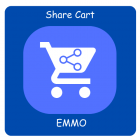Beginner’s Guide to PPC Tracking: How to Monitor Clicks and Conversions

Beginner’s Guide to PPC Tracking: How to Monitor Clicks and Conversions
Table of Contents
- What is PPC Tracking and Why is it Important?
- Understanding Clicks vs. Conversions in PPC
- Setting Up PPC Tracking for Beginners
- Tools You Need for Effective PPC Tracking
- How to Track Clicks in PPC Campaigns
- Step-by-Step Guide to Tracking Conversions
- Choosing the Right KPIs for PPC Tracking
- How to Use Google Analytics for PPC Tracking
- Setting Up Conversion Tracking in Google Ads
- Analyzing Click Data for Better PPC Results
- Understanding Attribution Models in PPC
- Tips for Optimizing PPC Campaigns with Tracking
- How to Track Mobile PPC Clicks and Conversions
- Creating Custom Reports for PPC Campaigns
- Tracking Cross-Device Conversions in PPC
- Measuring ROI Through PPC Tracking
- Common PPC Tracking Mistakes and How to Avoid Them
- How to Use UTM Parameters in PPC Tracking
- Advanced Tracking Techniques for PPC Campaigns
- Building a Long-Term Strategy with PPC Tracking Data
What is PPC Tracking and Why is it Important?
PPC (Pay-Per-Click) tracking involves monitoring the performance of your online ads to see which ones generate clicks and drive valuable actions, such as form submissions, sign-ups, or purchases. By setting up proper tracking, businesses can gain insights into which campaigns and keywords lead to conversions. This is vital because tracking lets you see what’s working and helps you allocate your budget toward ads that yield the best results. Without PPC tracking, optimizing campaigns for success would be guesswork, making it harder to improve ROI and customer acquisition efforts.
Understanding Clicks vs. Conversions in PPC
In PPC advertising, a “click” is simply when someone clicks on your ad, whereas a “conversion” is when a user completes a specific action, like signing up or purchasing. High clicks with low conversions often indicate a problem with ad relevance, landing page quality, or targeting. Understanding these two metrics is key to PPC success. While clicks show interest, conversions are what drive your revenue. By focusing on both, you can create a well-rounded strategy that attracts the right audience and encourages them to take action.
Tip
If you offer your SEO texts in several languages or localize them for different regions, your pages may be incorrectly classified as duplicate content. However, there is a simple solution to this in the form of hreflang. Our article explains what you need to bear in mind when using hreflang.
Read more about hreflangSetting Up PPC Tracking for Beginners
Getting started with PPC tracking can be straightforward with the right steps. Begin by integrating your PPC platform (like Google Ads) with an analytics tool (like Google Analytics). Then, set up conversion actions—these are the specific events you want to track, such as form submissions or purchases. Most platforms provide setup instructions or a tracking pixel to add to your website. Once you verify that your tags are working, you’ll start seeing data in your analytics tool. Following these steps ensures you’re set up to monitor the right actions from the start.
Tools You Need for Effective PPC Tracking
The best PPC tracking often involves multiple tools. Google Analytics is essential for tracking user behavior on your website, while Google Ads provides data on ad performance. For more in-depth analysis, consider tools like SEMrush for keyword tracking or HubSpot for integrated ad management. PPC tracking software like Ahrefs can offer additional insights, like competitor analysis and performance reporting. Using a combination of these tools gives you a 360-degree view of your PPC efforts, from ad impressions to conversion actions on your website.
How to Track Clicks in PPC Campaigns
Click tracking in PPC campaigns begins with setting up UTM parameters or using URL tagging, which appends additional information to your ad links. Platforms like Google Ads automatically track clicks, but adding UTM tags lets you gain deeper insights by capturing more data in Google Analytics. This shows the exact sources of clicks and allows you to compare performance across platforms. Tracking clicks helps identify where users enter your site and how they navigate after clicking, giving you clues to refine targeting and content.
Step-by-Step Guide to Tracking Conversions
To track conversions, start by defining the actions you want to track, like completing a purchase or filling out a form. Then, create these actions in Google Ads or Google Analytics as “conversion goals.” Next, generate a conversion tag, which is a snippet of code that you’ll add to your website’s confirmation or “thank you” pages. This tag tells your tracking platform that a conversion has occurred. Regularly check your conversion data to see which ads drive the highest number of completed actions and optimize accordingly.
Choosing the Right KPIs for PPC Tracking
Selecting the right KPIs (Key Performance Indicators) is crucial for evaluating your PPC campaigns. Some popular KPIs include CTR (click-through rate), CPC (cost per click), conversion rate, and cost-per-conversion. Each KPI provides different insights—for example, CTR shows how compelling your ad is, while conversion rate indicates how well your landing page convinces users to act. Choosing KPIs that align with your business goals will help you focus on metrics that truly reflect campaign success and areas for improvement.
How to Use Google Analytics for PPC Tracking
Google Analytics is one of the most powerful tools for tracking PPC campaigns. Start by linking Google Ads with Analytics to view data across both platforms. Set up goals in Analytics to measure specific actions like form submissions or purchases. Use the “Acquisition” and “Conversions” sections to monitor PPC performance by campaign, keyword, and device. Google Analytics’ Multi-Channel Funnels report is especially useful for seeing how users interact with various ads over multiple sessions, providing a complete view of the customer journey.
Setting Up Conversion Tracking in Google Ads
Selecting the right KPIs (Key Performance Indicators) is crucial for evaluating your PPC campaigns. Some popular KPIs include CTR (click-through rate), CPC (cost per click), conversion rate, and cost-per-conversion. Each KPI provides different insights—for example, CTR shows how compelling your ad is, while conversion rate indicates how well your landing page convinces users to act. Choosing KPIs that align with your business goals will help you focus on metrics that truly reflect campaign success and areas for improvement.
Analyzing Click Data for Better PPC Results
Click data analysis is essential for improving PPC results. High click-through rates indicate successful ad copy, while high bounce rates may signal a mismatch between ads and landing pages. Examine metrics like time on page and exit rates to understand how users interact with your site after clicking. If certain ads drive more engaged users, consider expanding these campaigns. Conversely, ads with high bounce rates may need revised copy or better targeting.
Understanding Attribution Models in PPC
Attribution models determine how credit for a conversion is assigned to various interactions. Common models include “last-click” (giving all credit to the final ad interaction) and “first-click” (crediting the initial interaction). Google Analytics also offers linear, time-decay, and position-based models, each distributing credit differently. Understanding these models helps you identify which interactions contribute most to conversions, enabling better-informed decisions on budgeting and bid adjustment.
Tips for Optimizing PPC Campaigns with Tracking
Optimize PPC campaigns by analyzing tracked data to enhance keywords, bid strategies, and ad creative. Pause keywords with high costs but low conversions, and prioritize keywords with strong conversion rates. Use ad testing (A/B testing) to improve ad copy. Adjust bidding for high-converting keywords or audience segments. These incremental adjustments help you refine campaigns for cost-effectiveness and higher ROI.
How to Track Mobile PPC Clicks and Conversions
Tracking mobile PPC campaigns is essential, as user behavior varies by device. Ensure your website is mobile-friendly and verify that tracking pixels work on mobile. Tools like Google Ads and Analytics provide data by device type, enabling mobile-specific adjustments. Metrics like mobile CTR and conversion rates help identify where campaigns succeed or need adjustment for mobile users, optimizing reach and engagement.
Creating Custom Reports for PPC Campaigns
Custom reports in Google Analytics or Google Ads help you focus on data that matters. Set up reports to view performance by device, location, or demographic. For example, if mobile users convert more, you might focus your ad spend there. Custom reports make it easier to spot trends, allowing you to adjust strategies quickly for better outcomes.
Tracking Cross-Device Conversions in PPC
Cross-device tracking shows when users click an ad on one device but convert on another. This insight is key in understanding the customer journey. Google Analytics provides cross-device reports that reveal how users switch between devices. With this data, you can optimize campaigns to target users effectively across multiple devices, enhancing your audience reach and ROI.
Measuring ROI Through PPC Tracking
ROI for PPC is calculated by comparing the revenue from conversions to ad spend. Cost-per-conversion and overall sales generated through PPC help determine if campaigns are profitable. Measuring ROI informs your budgeting decisions, allowing you to scale up successful campaigns and reallocate funds from underperforming ones.
Common PPC Tracking Mistakes and How to Avoid Them
PPC tracking errors, such as incorrect conversion tags or untracked goals, can lead to inaccurate data. Avoid these mistakes by double-checking your tag placement, verifying goals, and conducting regular audits. Testing tracking setups before launching campaigns prevents data discrepancies and ensures accurate insights.
How to Use UTM Parameters in PPC Tracking
UTM parameters are tags added to URLs that help track traffic sources, campaigns, and ad content in analytics tools. Adding UTM tags to your PPC links gives granular insights into which specific ads or keywords drive traffic. UTM tagging is particularly useful for tracking performance across multiple platforms, enabling better optimization decisions.
Advanced Tracking Techniques for PPC Campaigns
Advanced techniques like retargeting allow you to re-engage users who interacted with previous ads. Tools like heatmaps provide visual data on user interaction with landing pages, while A/B testing helps optimize for higher conversions. Combining these techniques with PPC tracking data helps refine your strategy and boosts campaign effectiveness.
Building a Long-Term Strategy with PPC Tracking Data
Use long-term tracking data to uncover trends, such as seasonal spikes in conversions or best-performing keywords. By analyzing these patterns, you can adjust bids, budgets, and ad timing. Building a data-driven, long-term PPC strategy ensures you’re maximizing ROI and sustaining campaign success over time.
| PPC Tracking Essentials: Monitoring Clicks and Conversions | |
|---|---|
| 1. Importance of PPC Tracking | PPC tracking reveals which ads drive engagement and ROI, guiding budget allocation. |
| 2. Clicks vs. Conversions | Clicks show interest; conversions measure actions taken, like purchases or sign-ups. |
| 3. Tools for PPC Tracking | Use tools like Google Analytics and Google Ads for insights into ad performance. |
| 4. Setting Up Conversion Tracking | Define conversions, add tracking tags, and monitor key actions that impact revenue. |
| 5. Key PPC Metrics | Focus on CTR, CPC, and conversion rates to measure ad effectiveness. |
| 6. Custom Reports | Create tailored reports to monitor PPC data by device, location, or demographics. |
| 7. UTM Parameters | Tag URLs with UTMs to track traffic sources and campaign effectiveness. |
| 8. Tracking Mobile Conversions | Optimize for mobile by tracking mobile-specific metrics and user behavior. |
| 9. Avoiding Common Mistakes | Regularly audit tags to ensure accurate data and effective insights. |
| 10. Building Long-Term Success | Use PPC data trends to refine strategies and improve long-term performance. |
FAQs
What is PPC Tracking and Why is it Important?
PPC (Pay-Per-Click) tracking monitors ad performance to see which ads generate clicks and valuable actions, like purchases. This data helps businesses understand successful campaigns, allocate budget effectively, and improve ROI by focusing on high-performing ads.
Understanding Clicks vs. Conversions in PPC
A “click” is when a user clicks an ad, while a “conversion” is a completed action like a purchase. Tracking both is crucial—clicks show interest, but conversions directly impact revenue, guiding campaign adjustments for optimal results.
How Do I Set Up PPC Tracking?
Start by connecting your PPC platform with an analytics tool and setting up conversion actions to track desired outcomes, such as purchases. Adding tracking pixels and verifying their functionality ensures accurate data collection.
What Tools are Essential for PPC Tracking?
Google Analytics and Google Ads provide core tracking, while SEMrush, HubSpot, and Ahrefs offer insights on keyword performance, competitor analysis, and ad management, creating a comprehensive tracking toolkit.
How to Track Clicks in PPC Campaigns?
Use UTM parameters or URL tagging to gather data on ad clicks. These tags help track user journeys, giving insights into entry points and guiding improvements in targeting and content strategy.
How Do I Track Conversions in PPC?
Define actions to track, like purchases, set them as conversion goals in your PPC platform, and add tracking tags to your website. Regularly review data to see which ads drive conversions and optimize accordingly.
Which KPIs Are Best for PPC Tracking?
KPIs such as CTR, CPC, conversion rate, and cost-per-conversion provide essential insights. Align KPIs with business goals to focus on metrics that reflect true campaign success.
How to Use Google Analytics for PPC Tracking?
Link Google Ads with Analytics, set up goals, and use reports to analyze campaign, keyword, and device performance. Multi-Channel Funnels show how users interact with various ads, offering a full view of the customer journey.
How Do I Set Up Conversion Tracking in Google Ads?
Create conversion actions in Google Ads, set them as goals, and add tags to relevant pages on your site. These steps ensure accurate tracking of conversions from Google Ads clicks.
How to Analyze Click Data for Better PPC Results?
Analyzing metrics like click-through rates, bounce rates, and time on page reveals user behavior. High CTR with high bounce rates may need improved landing pages or targeting adjustments.
What is Attribution in PPC?
Attribution models assign credit for conversions across interactions. Understanding models like last-click or first-click helps determine valuable customer interactions, optimizing campaigns accordingly.
Tips for Optimizing PPC Campaigns with Tracking
Refine campaigns by analyzing data, pausing low-performing keywords, and improving ad copy. Focus on high-converting keywords and A/B test ads to boost performance.
How to Track Mobile PPC Clicks and Conversions?
Ensure tracking pixels work on mobile, use Google Ads and Analytics data by device type, and track mobile CTR and conversion rates to improve mobile user engagement.
How to Create Custom PPC Reports?
Create reports based on device, location, and demographic data to spot trends. These insights guide adjustments for improved performance.
Why is Cross-Device Tracking Important in PPC?
Cross-device tracking shows how users switch devices before converting, providing insights into the customer journey and enabling better targeting across multiple devices.
How Do You Measure ROI in PPC?
Calculate ROI by comparing revenue from conversions with ad spend. Track cost-per-conversion and total sales to assess profitability and make informed budget adjustments.
What Common PPC Tracking Mistakes Should I Avoid?
Errors like incorrect tag placement or untracked goals can lead to inaccurate data. Regularly audit tracking setups to ensure accurate performance insights.
How to Use UTM Parameters in PPC?
Add UTM tags to URLs to track traffic sources, campaigns, and content in analytics tools. This provides detailed insights, especially useful for multi-platform performance analysis.
What Are Advanced PPC Tracking Techniques?
Techniques like retargeting, A/B testing, and using heatmaps enhance tracking, helping you optimize for conversions and gain deeper audience insights.
How to Build a Long-Term PPC Strategy with Tracking Data?
Analyze long-term data for trends and adjust bids, budgets, and ad timing. A data-driven strategy maximizes ROI and sustains PPC success over time.










